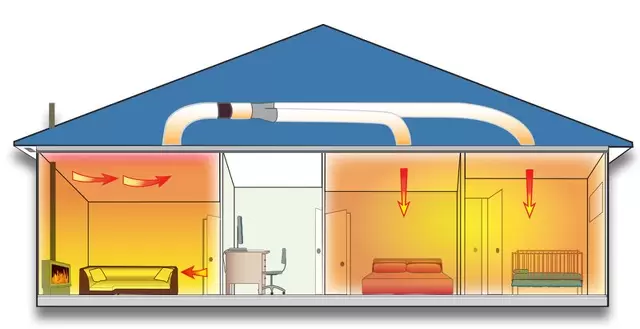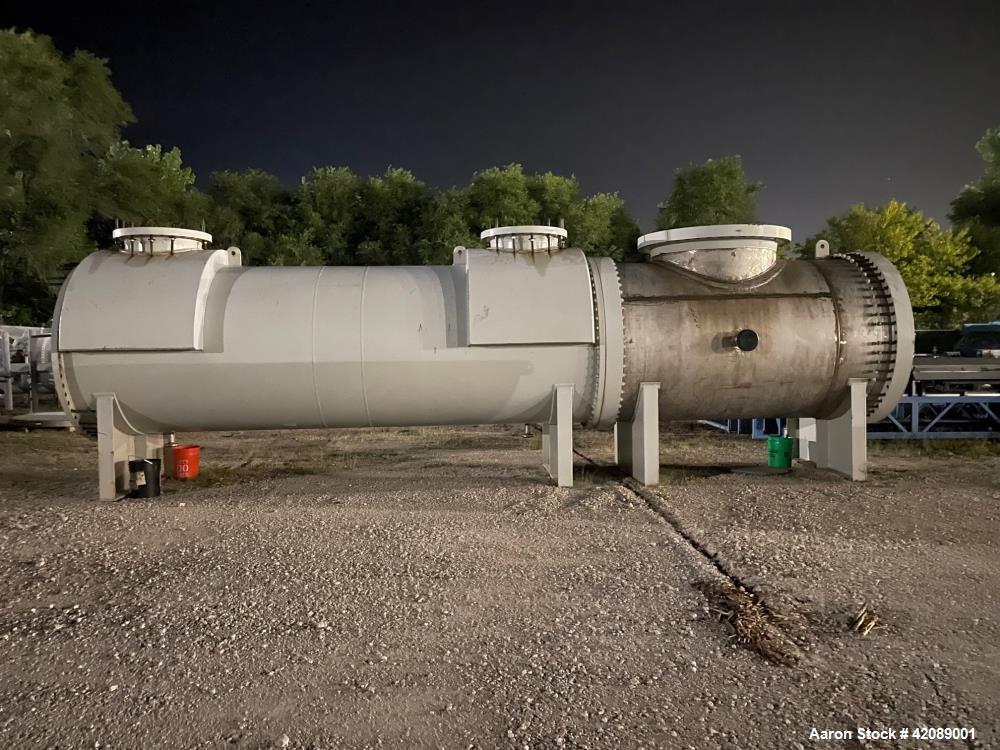Real-Time Monitoring: How DVS Heat Transfer Systems Enable Predictive Maintenance
The Role of Heat Transfer Systems in Sustainable Energy Solutions for the Future
Heat transfer systems are important in the pursuit for lasting energy options. They maximize thermal power administration, improving the efficiency of sustainable modern technologies. By utilizing devices like radiation, convection, and conduction, these systems minimize power losses. Their role in solar thermal and geothermal applications is particularly considerable. As advancements emerge, the possibility for additional advancements raises important questions about future energy techniques. What advancements will form the landscape of sustainable power?
Understanding Heat Transfer Systems

The Value of Thermal Power Management
Effective thermal energy management is necessary for maximizing power efficiency and minimizing waste in numerous systems. By regulating temperature level and enhancing Heat transfer procedures, companies can noticeably reduce power usage and functional prices. Efficient management includes the application of sophisticated modern technologies and methods that keep an eye on and control thermal conditions within systems, making sure that energy resources are used successfully. Additionally, proper thermal energy administration contributes to decreasing greenhouse gas exhausts, lining up with global sustainability goals. It additionally improves system reliability and efficiency, causing improved product high quality and longer tools lifespan. Ultimately, prioritizing thermal energy monitoring is a crucial action in the direction of creating more sustainable energy services and promoting an accountable method to power intake in domestic and industrial contexts.
Applications of Heat Transfer in Renewable Resource
While numerous eco-friendly power sources promise sustainability, the efficient application of Heat transfer plays an essential function in their efficiency. In wind power systems, Heat transfer is utilized for generator element cooling, enhancing efficiency and durability. Geothermal energy depends on reliable Heat exchange between the planet's subsurface and the liquid circulating in the system, making the most of energy removal. Biomass power procedures additionally profit from Heat transfer, as it assists in transforming organic materials into usable fuel via pyrolysis and gasification. Furthermore, in hydropower, preserving perfect temperatures in storage tanks can enhance power outcome. Each of these applications demonstrates the critical importance of Heat transfer systems in improving renewable power technologies, ultimately adding to a much more sustainable power future.
Enhancing Solar Thermal Power Efficiency
As solar thermal power systems proceed to progress, enhancing their performance has come to be vital for optimizing power result. Developments in Heat transfer modern technologies, such as boosted thermal storage products and innovative Heat exchangers, play a substantial role in improving efficiency. By using advanced materials that have superior thermal conductivity, systems can move and record Heat better. Furthermore, incorporating radar that adhere to the sun's path guarantees that collection agencies receive excellent solar exposure throughout the day. Utilizing nanotechnology in solar absorbers can additionally boost power absorption prices. Additionally, integrating computerized control systems aids manage and regulate temperatures energy distribution effectively, causing lowered losses and improved overall system efficiency. These improvements pave the means for more sustainable solar thermal energy services in the future.
Geothermal Heating: A Sustainable Option
Geothermal home heating provides a feasible choice for sustainable energy, using significant ecological advantages through reduced greenhouse gas emissions. Its efficiency and cost-effectiveness make it an eye-catching option to standard heating unit. However, difficulties connected to application should be addressed to maximize its possible impact.
Ecological Advantages of Geothermal
Although standard heating techniques contribute considerably to greenhouse gas discharges, geothermal home heating offers a compelling choice that decreases ecological effect. By harnessing the Planet's internal Heat, geothermal systems make use of a renewable resource resource, noticeably decreasing dependence on fossil gas. This approach creates very little carbon discharges, making it a cleaner alternative for domestic and industrial heating. Additionally, geothermal systems promote energy effectiveness, as they call for less energy compared to standard heater. DVS Heat Transfer Systems. The usage of geothermal energy likewise assists in minimizing air contamination, boosting regional air top quality and public wellness. As a lasting service, geothermal heating sustains climate change reduction efforts, placing itself as a crucial component in the change in the direction of a greener future
Efficiency and Cost-Effectiveness
How does geothermal heating determine up in regards to performance and cost-effectiveness contrasted to standard home heating systems? Geothermal heating demonstrates superior effectiveness, typically attaining a coefficient of efficiency (COP) of 3 to 5, suggesting it generates three to five devices of Heat for every unit of power consumed. This efficiency converts right into lower operating expenses, particularly in regions with secure geothermal sources. Preliminary setup expenses can be greater than standard systems; nonetheless, long-lasting savings on power bills and decreased maintenance expenditures can balance out these in advance financial why not check here investments. In addition, lots of governments incentivize geothermal systems via refunds and tax credits, boosting their cost-effectiveness. In general, geothermal home heating becomes a sustainable and economically feasible alternative to more conventional heating services.
Implementation Obstacles and Solutions
Various challenges can restrain the widespread execution of geothermal home heating systems, regardless of their clear advantages as a sustainable power option. High preliminary installation expenses commonly deter homeowners and financiers, making funding a considerable obstacle. In addition, the geographical constraints of appropriate geothermal websites restrict availability in certain regions. Neighborhood regulations and allowing procedures can also make complex project development, causing hold-ups. Public awareness and understanding of geothermal systems continue to be low, hindering approval. To attend to these obstacles, targeted education and learning campaigns can boost open secret, while federal government motivations might ease monetary burdens. Collaborating with regional authorities to streamline policies may assist in smoother job authorizations, inevitably advertising the fostering of geothermal home heating as a viable, sustainable energy option.
Developments in Heat Transfer Technologies
Developments in Heat transfer technologies play a vital role in boosting energy effectiveness and sustainability. Advanced Heat exchangers and stage change products go to the forefront of these developments, offering substantial renovations in thermal administration. These innovations not only maximize power use however likewise add to decreasing environmental effect in numerous applications.
Advanced Heat Exchangers
Advanced Heat exchangers play a crucial role in improving energy effectiveness throughout numerous applications in sustainable power remedies. These gadgets help with the transfer of Heat between two or more liquids, substantially lowering power consumption in processes such as commercial heating, air conditioning, and power generation. Advancements in materials and layout, such as making use of nanofluids and portable setups, have led to enhanced thermal efficiency and decreased dimension demands. In addition, improvements in digital tracking and control systems enable enhanced procedure, additional increasing performance. By this page reducing waste Heat and making best use of energy recuperation, advanced Heat exchangers add to lower carbon impacts and sustain the change toward eco-friendly technologies. Their proceeded growth is important for accomplishing international power sustainability goals.
Phase Adjustment Materials
The combination of stage adjustment products (PCMs) into Heat transfer technologies represents a considerable advancement in energy administration and performance. PCMs absorb and release thermal energy throughout their phase changes, making it possible for reliable temperature level guideline in structure products and power systems. By saving excess Heat throughout peak periods and launching it when demand rises, PCMs contribute to load shifting and power preservation - DVS Heat Transfer Systems. This capability enhances the efficiency of renewable resource systems, especially in solar thermal applications. Additionally, PCMs can improve best site the thermal comfort of indoor atmospheres, decreasing dependence on standard heating and cooling methods. As advancements in PCM formulations remain to arise, their function in lasting energy remedies is poised to expand, using appealing opportunities for future research and application

Future Leads for Heat Transfer in Sustainable Energy
As the need for lasting power services remains to increase, the duty of Heat transfer systems is becoming progressively important in shaping future technologies. Innovations in styles and products are anticipated to enhance performance in Heat transfer, reducing energy losses in various applications. The combination of sophisticated thermal storage space systems, such as stage adjustment products and thermochemical storage space, will certainly make it possible for far better monitoring of power sources. Study right into nanofluids and biomimetic Heat exchangers might better maximize thermal efficiency. The fostering of clever modern technologies will certainly permit for real-time surveillance and adaptive control of Heat transfer processes. These improvements are poised to greatly add to the overall efficiency and sustainability of power systems, leading the way for an extra energy-efficient future.
Frequently Asked Inquiries
Exactly How Can Individuals Execute Heat Transfer Equipment in your home?

Individuals can apply Heat transfer systems in the house by mounting energy-efficient home appliances, utilizing radiant home heating, and maximizing insulation. These actions improve energy efficiency, lower expenses, and promote lasting practices in residential environments.

What Are the Expenses Connected With Setting Up Heat Transfer Systems?
The costs connected with installing Heat transfer systems vary widely, normally incorporating devices, installment labor, and upkeep. Aspects such as system type, home size, and regional policies considerably influence the general expenditure involved.
Are There Government Incentives for Heat Transfer System Installations?
Government rewards for Heat transfer system installations differ by region and can consist of tax credits, rebates, and gives. These monetary benefits aim to motivate adoption, eventually promoting power effectiveness and decreasing environmental influence within neighborhoods.
How Do Heat Transfer Systems Influence Energy Costs?
Heat transfer systems especially influence power expenses by optimizing energy effectiveness. By enhancing the transfer of Heat, these systems minimize energy usage, resulting in lower utility expenses and creating a much more lasting method to power monitoring.
What Upkeep Is Needed for Heat Transfer Systems?
Maintenance for Heat transfer systems consists of regular examinations, cleansing of parts, checking liquid degrees, guaranteeing correct insulation, and replacing worn components. These jobs help maintain effectiveness, prevent malfunctions, and lengthen the system's operational life-span.
These systems help with the activity of thermal power from one medium to one more, making it possible for the transfer of Heat for cooling, heating, or energy generation functions. Geothermal power depends on reliable Heat exchange in between the planet's subsurface and the fluid circulating in the system, taking full advantage of power extraction. In addition, geothermal systems promote power efficiency, as they require less energy compared to traditional heating systems. Advanced Heat exchangers play an essential duty in boosting energy efficiency throughout numerous applications in sustainable power remedies. Heat transfer systems especially affect power expenses by optimizing energy efficiency.